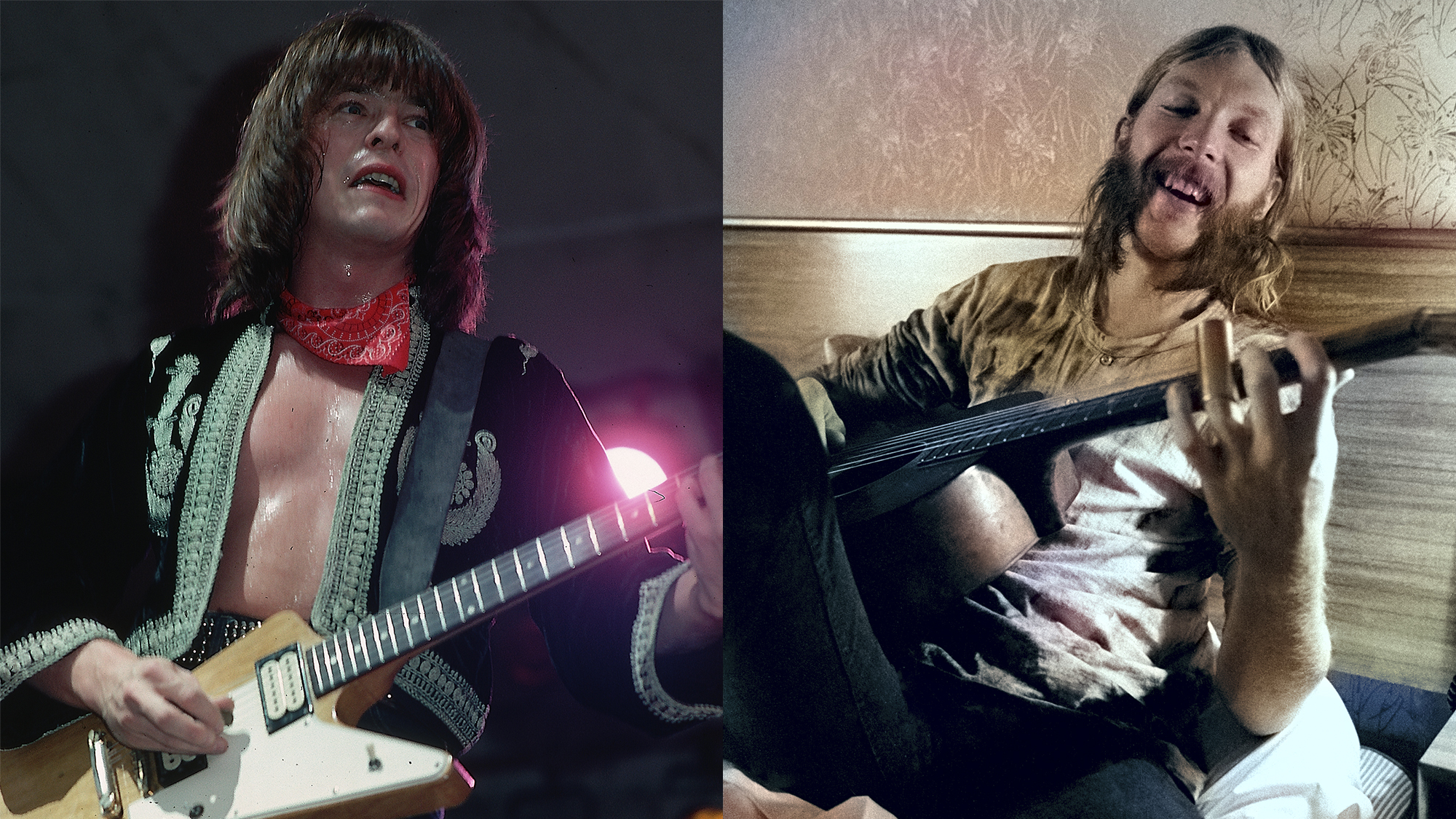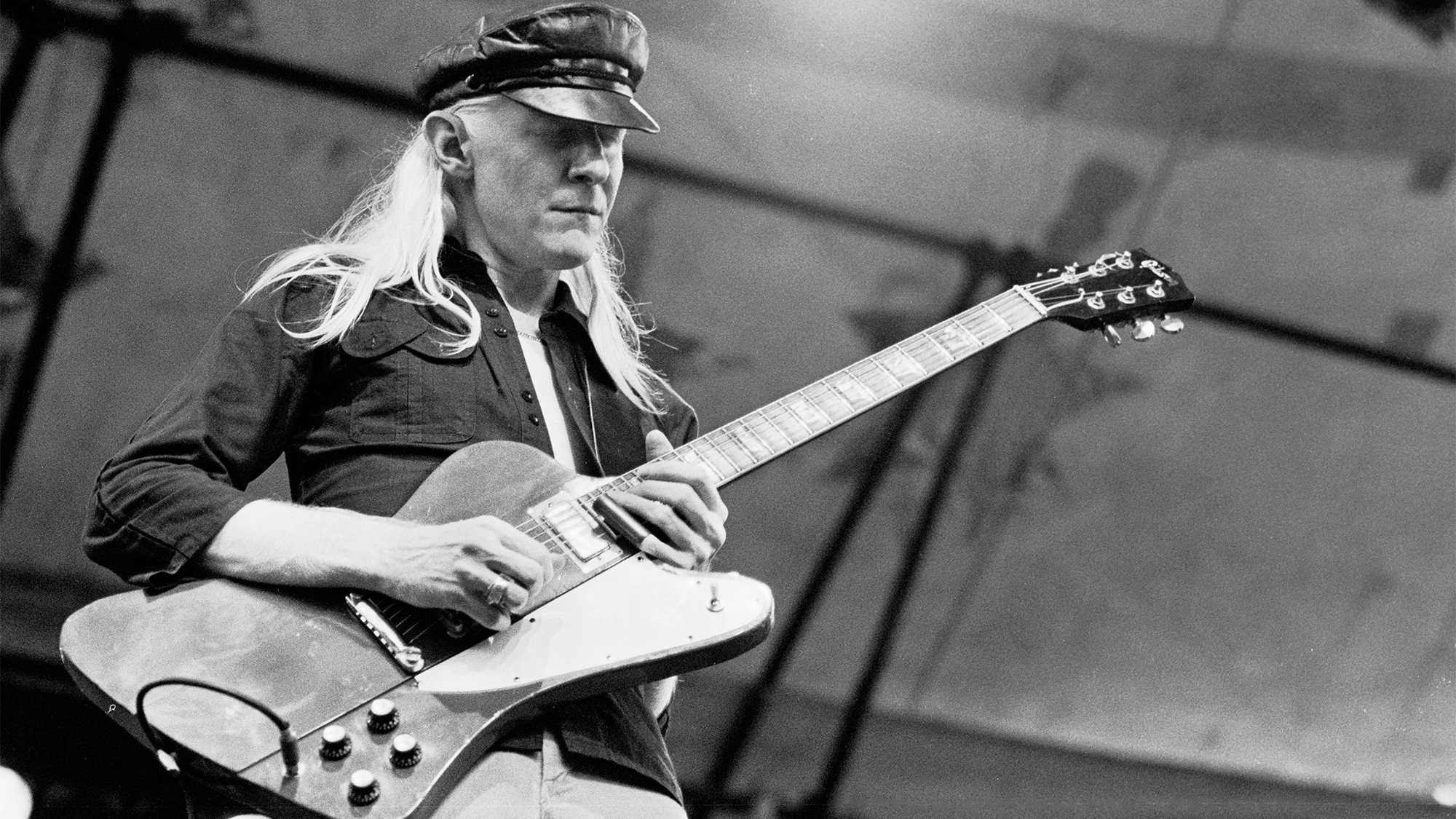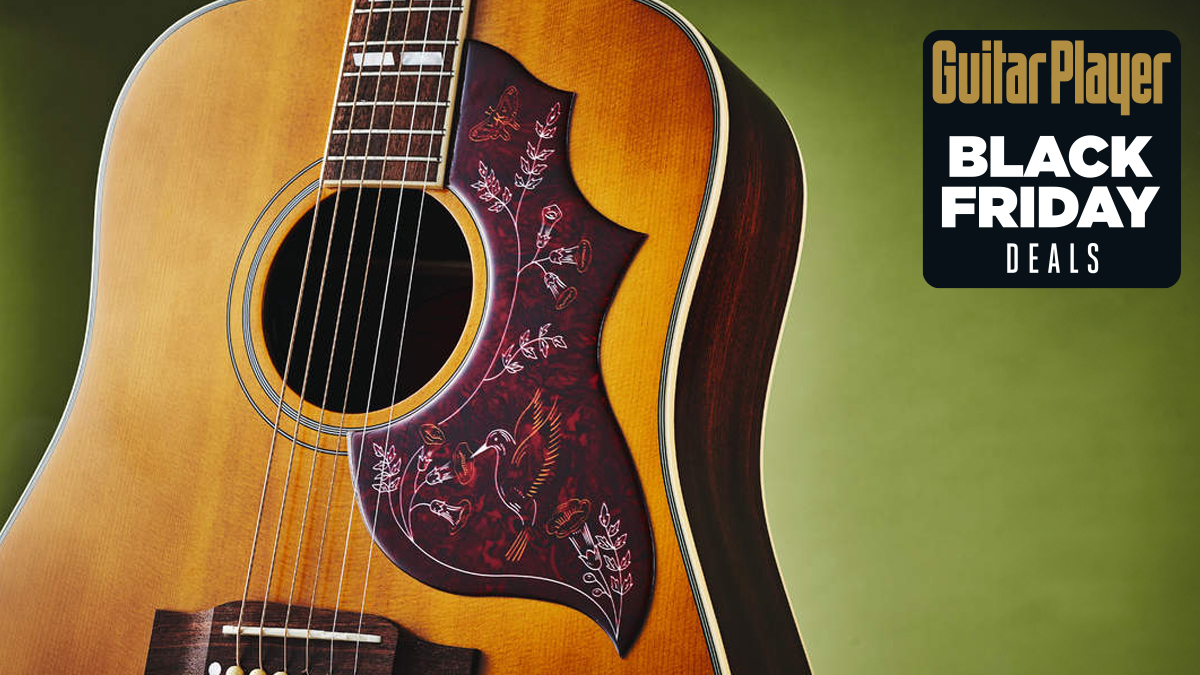“You were the person that made me think, Wow, that slide can make some real good rockin’ music!” Rick Derringer told us how he inspired the Allman Brothers' Duane Allman to become the greatest slide guitarist in rock
"Johnny Winter showed me a lot,” said the guitarist, who died May 26. Little did he know he would himself prove influential to slide's GOAT

Rick Derringer’s guitar talents made him a go-to player for artists across the spectrum. Over the course of his 60-year career, the guitarist — who died May 26 — performed onstage or on record with Johnny and Edgar Winter, Todd Rundgren, Steely Dan, Cyndi Lauper, Barbra Streisand and numerous others over music's various genres.
If Derringer’s talents rode below the radar of many rock fans, they were evident to his contemporaries. By the dawn of the 1970s, he had not only impressed Johnny Winter — then riding high as the hottest electric guitar player in blues-rock — but also made an indelible impression on no less than Duane Allman.
As Derringer told Guitar Player in his August 1975 cover story, Allman credited Derringer for inspiring him to play slide guitar — no small honor considering that Allman became known as one of the greatest slide players of all time in his all-too-brief life.
Ironically, Derringer learned slide from Johnny Winter, whose brilliance with the implement preceded Allman’s by a scant few years.

Derringer and Winter met in 1969, while Derringer was with the McCoys, the pop group with which he’d found fame singing and playing guitar on their 1965 hit “Hang on Snoopy” at the age of just 17. By the decade’s final year, the McCoys’ career was in a tailspin. Rick and his brother Randy, who played drums in the McCoys, hooked up with Winter in the group Johnny Winter And, where Derringer added his considerable guitar firepower to Winter’s own.
Their collaboration led to the group recording its 1970 self-titled debut, which featured the Derringer-penned song “Rock and Roll, Hoochie Koo,” a signature tune for Winter three years before Derringer recorded it for his own solo debut, 1973’s All American Boy.
As Derringer explained, Winter had shown him the basics of slide playing well before the McCoys had broken up, and he had begun putting his new skills to use.
All the latest guitar news, interviews, lessons, reviews, deals and more, direct to your inbox!
“Johnny showed me a lot,” he told Guitar Player. “To me, he’s one of the best exponents of the slide guitar. I played it a lot in the McCoys when we were traveling.”
As Derringer explained, he played slide in open E tuning.
“I use a metal bar on my little finger so I can play with my other fingers. I used to get them made at a plumbing shop because that was a heavier bar, and I could get exactly the size I wanted for my finger and have it polished down real nice.”

Derringer hadn’t been playing with Winter for long when he and Johnny ran into Duane Allman on one of their jaunts.
“One time, in fact, Johnny and I were with Duane Allman. I didn’t feel much a part of it,” he admitted. “I felt, Here I am, a young kid playing with these guys that have been into country blues all their lives, but I was having fun playing along.”
By then Duane had made a name for himself as the Allman Brothers Band’s hot-shot slide guitarist. If there was one player in rock who could give Winter a run for his money, it was him.
So it was a big surprise to Derringer when the guitarist turned to him with something to say.
“At one point Duane said, ‘By the way, I’ve been meaning to tell you. I came down when you were at Thee Image in Miami.” The venue, now long gone, had hosted many acts of the late 1960s, including the Grateful Dead, the Jeff Beck Group and Led Zeppelin.
“And you were playing slide guitar on some song,” Duane continued. “I just wanted to tell you that you were the person at that time that made me think, ‘Wow, it’s amazing; that slide can make some real good rockin’ music.’
“I thought this guy’d been interested in it all his life,” Derringer explained to GP. “But he said that I was one of the people who made him become more involved in slide guitar.
“I only used it on one lousy song, and here Duane is telling me all this, and he becomes real famous for slide guitar. It was great. I loved it.”
Duane Allman would, in turn, inspire others to pick up the slide. At one point he taught the technique to Don Felder, prior to his tenure with the Eagles. After Allman died in 1971, Dickey Betts, his Allman Brothers Band co-guitarist, would be forced to perfect his own acoustic slide guitar talents to play Duane's electric parts.
“It was difficult to suddenly have to play slide,” Betts said. “I’ve always enjoyed playing acoustic slide, but I never cared much for playing electric slide and I hated having to play Duane’s parts. It was uncomfortable, but if we were going to play those songs, then I had to play them.”
Christopher Scapelliti is editor-in-chief of GuitarPlayer.com and the former editor of Guitar Player, the world’s longest-running guitar magazine, founded in 1967. In his extensive career, he has authored in-depth interviews with such guitarists as Pete Townshend, Slash, Billy Corgan, Jack White, Elvis Costello and Todd Rundgren, and audio professionals including Beatles engineers Geoff Emerick and Ken Scott. He is the co-author of Guitar Aficionado: The Collections: The Most Famous, Rare, and Valuable Guitars in the World, a founding editor of Guitar Aficionado magazine, and a former editor with Guitar World, Guitar for the Practicing Musician and Maximum Guitar. Apart from guitars, he maintains a collection of more than 30 vintage analog synthesizers.
